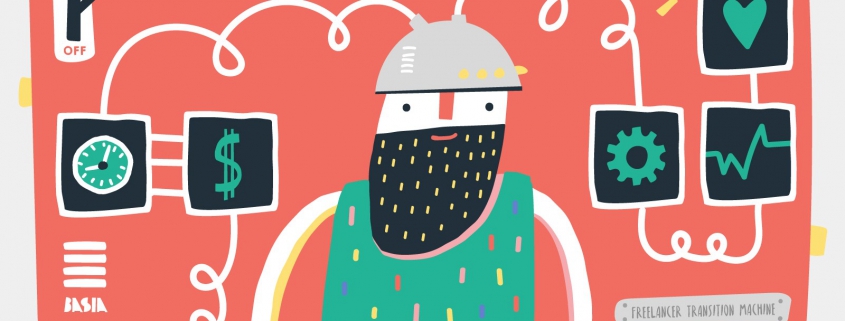Transitioning as a Freelancer: What you need to know
Freelancing is fun, but the transition is difficult. I am not going to sugar coat it, you should be thoroughly preparing for the tough change. That being said, once you make that change, it is worth it. If you are able to smoothly transition, I guarantee that you won’t go back to the way you worked before. OK, well I can’t exactly guarantee that, but I do know that you will see obvious benefits right away. Keep the tips below in mind (and utilize QuiGig of course) to help you ease into the vast and unique world of full-time freelancing.
Plan your Workstations in advance
Whether you enjoy to have a designated workspace that you always feel most productive in or you are a true digital nomad with just a laptop (how do people do this?) bouncing from town to town, you should have an idea of where you are hammering away each day. Simply visualizing your non-traditional workspace can boost both your productivity and creativity, and sometimes be the difference between getting anything done and losing an entire morning’s worth of work. At the very least, before you go to a new place, you should do a quick Google search on a couple of key components to a workstation. Does the area have stable WiFi? Is it going to be loud? Can you charge your laptop easily? Will there be kids? Do they even allow kids (if not, hire a babysitter)? All things that you might want to know before you venture somewhere you have never been before to start your daily freelancer tasks.
Ease Into It
Still not 100% sure that freelancing is something you want to do or would even be good at? Aim to take on or two small side jobs at first. Test the waters. As great as the quality of life can be as a freelancer, it can take a nosedive just as easily. There can be serious isolation from cutting off the social aspect of work cold turkey. Don’t believe me? If this is something that you think could happen to you, you could join Meetups or clubs in your area of people who are interested in the same activities.
Find a structure that works for you
You left the 9-5, but that doesn’t mean that you will be able to completely get away from it. Chances are, you will still have some semblance of a routine, but that is far from a bad thing! Studies have shown time and time again that having a constant and repeatable work routine helps productivity. Another important reason to set a definitive structure is so that you know when to stop working. Believe it or not, one of the most popular problems that plagues freelancers is overworking. With a set schedule, you have a designated stopping point for the day’s work, whether you have completely finished it or not.
Set Clear Boundaries
This point has been slightly touched on already, but it is important to revisit. You no longer work in an office with others counting down the minutes until 5 PM when y’all can leave. You are determining your hours, when you take your lunch break, and how long that will last (some days it may last 2 hours). With that freedom comes great responsibility, especially when clients have entrusted you with work. If your home is your workplace, it can be especially hard to shut the noise out, but you know what, that’s what headphones and discipline are for!
Try out QuiGig
We understand the plight of the freelancer because everyone on our team has been (or still is) a freelancer! I said it before, and I will say it again, freelancing is not easy and it can be expensive as well. You can sign up on QuiGig for free today, and begin getting quality leads for free as soon as tomorrow. We hope that you sign up and let us know what you think! We are hear to help you out and grow to be the best freelancer that you can be. Sign up now!






